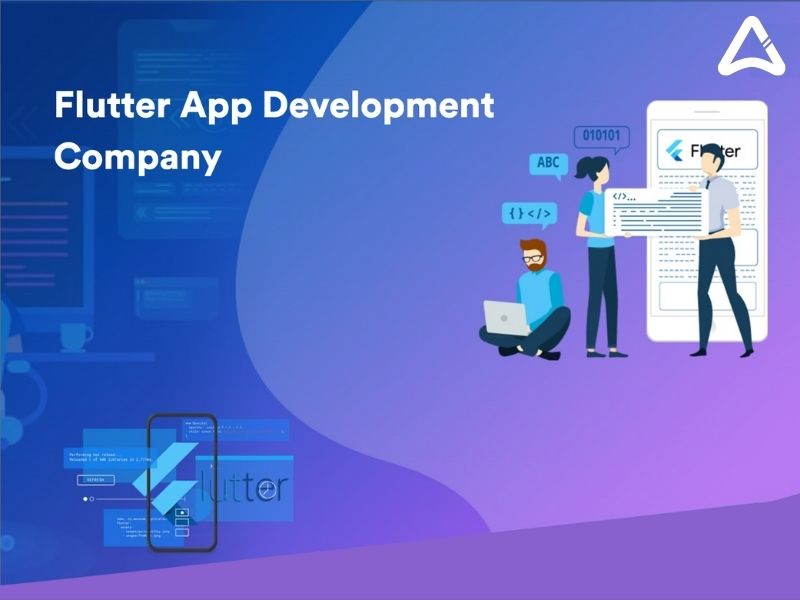
Master the art of Flutter app development with our 11 best practices. From efficient coding to sleek design, unlock the secrets of a top-notch app today!
Best Practices & Techniques for Flutter App Development
Flutter is a modern, open-source, cross-platform framework that has been gaining traction rapidly for app development over the years. Developed by Google, the framework is built on the Dart programming language, providing users with the ability to develop aesthetically beautiful & high-performance applications for a wide range of platforms, including mobile, web, & desktop. Flutter has been extensively used by developers for creating innovative applications, resulting in a plethora of high-quality applications available on app stores today.
Flutter app development is the perfect solution for those who require a robust, sophisticated, & seamless user interface with the potential for fast development time. However, as with any software development project, crafting a Flutter app comes with its own set of challenges. Therefore, in this blog, we will explore the best practices for Flutter app development to make the development a pleasant task.
Scaling Your Flutter App with 11 Best Strategies
Let’s help you create efficient, maintainable, & scalable applications with these best Flutter app development practices.
1. Plan & Organize
The first step towards creating a successful Flutter app is to come up with a detailed plan & organize your resources in a structured manner. Start by setting your project requirements, which should include features, design, configuration, & deployment. Once you have a clear understanding of the expected outcomes, start organizing the project structure.
2. Use A Robust State Management Solution
State management is an essential part of Flutter application development services. A robust state management solution not only helps you keep track of your app’s state across all widgets but also makes it easier to manage & update the app when necessary.
3. Implement A Modularity Strategy
To make your app maintainable & flexible, break your app down into small modules that can be easily managed & updated independently. Doing so not only makes your code more organized but also makes it easier to add new features or make changes in the future.
4. Follow Standard Architecture
Flutter allows developers to use many architectural patterns such as Model-View-Controller (MVC), Provider, Redux, & Bloc. It is imperative to choose the appropriate pattern for your app as it will help you manage the state efficiently, & make your code more readable & maintainable. You can take help from an application development company for this purpose as well.
5. Use Appropriate Widgets
Flutter has a huge collection of pre-built widgets which make designing a mobile app very much easier. Does not matter if you are hiring Flutter app development services in Canada or any other location, to make your development process faster and smoother, select the widgets that make sense for the application. It is possible to create a fast and visually appealing app by utilizing the right widgets.
6. Maintain Code Quality
Code quality is a key aspect of developing a successful Flutter app. Writing well-structured & readable code will ensure that your code is maintainable, scalable, & reusable. Use programming standards like Dart best practices & follow the guidelines presented in Flutter’s documentation.
7. Implement Responsive Designs
Mobile devices come in a variety of screen sizes, resolutions, & aspect ratios. It is essential to build the app that can adapt to the different screen sizes & provide an optimal user experience.
Flutter has a feature called Flutter’s Responsive Widgets that enables developers to build responsive designs that can adapt to different screen sizes. Make sure you ask your app building company to use this feature while building apps to provide a seamless experience to the users across different devices.
8. Use Efficient Libraries & Packages
Flutter has a vast ecosystem of libraries & packages that can help developers in building apps quickly & efficiently. However, it is essential to use libraries & packages that are efficient & well-maintained.
Using inefficient or outdated libraries & packages can lead to performance issues & reduce the app’s stability. It is recommended to choose popular & well-maintained libraries & packages that have a significant user base & active community support.
9. Optimize Performance
Build high-performance Flutter apps that don’t lag or freeze. Use Flutter’s hot-reload feature to quickly apply changes in your code & see how it impacts performance. Optimize performance by minimizing the use of heavy widgets & unnecessary stateful widgets.
10. Test Thoroughly
Testing is an integral part of a Flutter application development process. Flutter’s extensive testing framework allows you to test your application thoroughly, from unit testing to integration testing, & user interface testing. This way, you can identify & fix bugs before releasing the app. Design modules for each functionality & test all the possible cases.
11. Secure Your Code
Security is becoming an increasingly crucial issue, & Flutter’s application security features make it easier to secure your code. Use the latest encryption algorithms & ensure your application is robust against SQL Injection, XSS, & CSRF.
Wrapping up
By following these practices, you can ensure that your app is optimized for speed, functionality, & aesthetics.
However, developing robust & successful apps is not an easy task. It requires technical expertise, creativity, & a keen attention to detail that only top mobile app development companies possess. This is where Appstudio can help you with Flutter app development.
They have a team of highly skilled developers who are proficient in app development services & the developers are well-versed in the latest technologies & trends in app development, & they possess the necessary expertise to deliver superior-quality apps.
Moreover, Appstudio understands the importance of collaboration, communication, & transparency when it comes to project management. They work closely with the clients to ensure their goals & expectations are met, while keeping them informed throughout the entire development process.